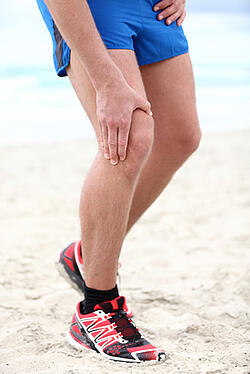Published on: May 14, 2015
 Sports can be one of the most dangerous activities that you engage in, if you choose to do so. Even the non-contact sports like soccer can have their fair share of risks. Any hard impact has the potential to break a bone or tear a tendon, meaning immense pain for you (not to mention time off of the field). Imagine this, though: landing the wrong way on the wrong body part, resulting in continuous, terrible pain and limited mobility. You might even move beyond the immense pain part to being disabled from doing work, especially if you harm your knee or crack your femur, tibia, pelvis, or at least one tarsal bone (in your feet).
Sports can be one of the most dangerous activities that you engage in, if you choose to do so. Even the non-contact sports like soccer can have their fair share of risks. Any hard impact has the potential to break a bone or tear a tendon, meaning immense pain for you (not to mention time off of the field). Imagine this, though: landing the wrong way on the wrong body part, resulting in continuous, terrible pain and limited mobility. You might even move beyond the immense pain part to being disabled from doing work, especially if you harm your knee or crack your femur, tibia, pelvis, or at least one tarsal bone (in your feet).
Do I Qualify?
Well, in short, it’s complex. As these types of injuries are fairly common, the Social Security Administration (SSA) offers guidelines as to who can receive benefits for these injuries. For any of the above conditions that we mentioned, you have to have one main symptom: the “inability to ambulate effectively.” Without the ability to move, you’re going to qualify for disability. In particular, the knee requires that you have degradation of the joint regardless of cause. The SSA defines their burden of proof as signs of that inability to ambulate along with imaging of “joint space narrowing, bony destruction, or ankylosis of the knee."
Torn ACL and Disability
Sportsmen know that there are more injuries than just deteriorated knees and broken bones. Tearing your anterior cruciate ligament (ACL) can be painful, especially when you consider just how disabling it can be. Without this ligament, you won’t be able to stand. While the reports vary on whether it’s painful or not, the consensus (backed up by science) is that the knee will be very wobbly and you won’t be able to stand the way you’d like.
When it comes to disability benefits, this sports-related injury is a little tougher to navigate. The SSA has a twelve month guideline, in that any disability that they’re going to pay out benefits for must be a permanent one—meaning that it will last for a year or longer. Most ACL tears and ruptures don’t last that long, thanks to reconstructive surgery and physical therapy. If you’re expected to get better this year, then you’re not going to be able to get benefits.
However, thanks to a special listing for injuries, which seems to reference this injury, there are specific guidelines regarding this. If you have a torn or ruptured ACL and you are not expected to return to full mobility for a year or more, you qualify. If you are expected to recover or have recovered before the year’s time, you will not qualify. The SSA tends to make things complex, but with this injury they keep it mostly simple.
Sports Injuries Are No Simple Issue
Sports injuries and disability aren’t simple in any way, really. Most of the listings in the SSA’s Blue Book are listings for other injuries and disabilities that coincide with sports-related injuries. While sports injuries aren’t entirely disabling in themselves, that doesn’t mean that they can’t be—and that doesn’t have to be on the short term, either. If you run constantly on a harder track than you need to, you can degrade your own knees to the point where they’re prone to arthritis (or another injury). Be careful out on the track or on the field. Also keep in mind that many people with these types of injuries are capable of desk jobs (referred to by Social Security as "sedentary" occupations) and are therefore not disabled.
As always, if you’re suffering from an injury that is keeping you from work, be sure to give us a call. We’re here to help and we don’t want you to miss out on the benefits you deserve. Just because you’re hurt doesn’t mean that you can’t help to provide for your family.

